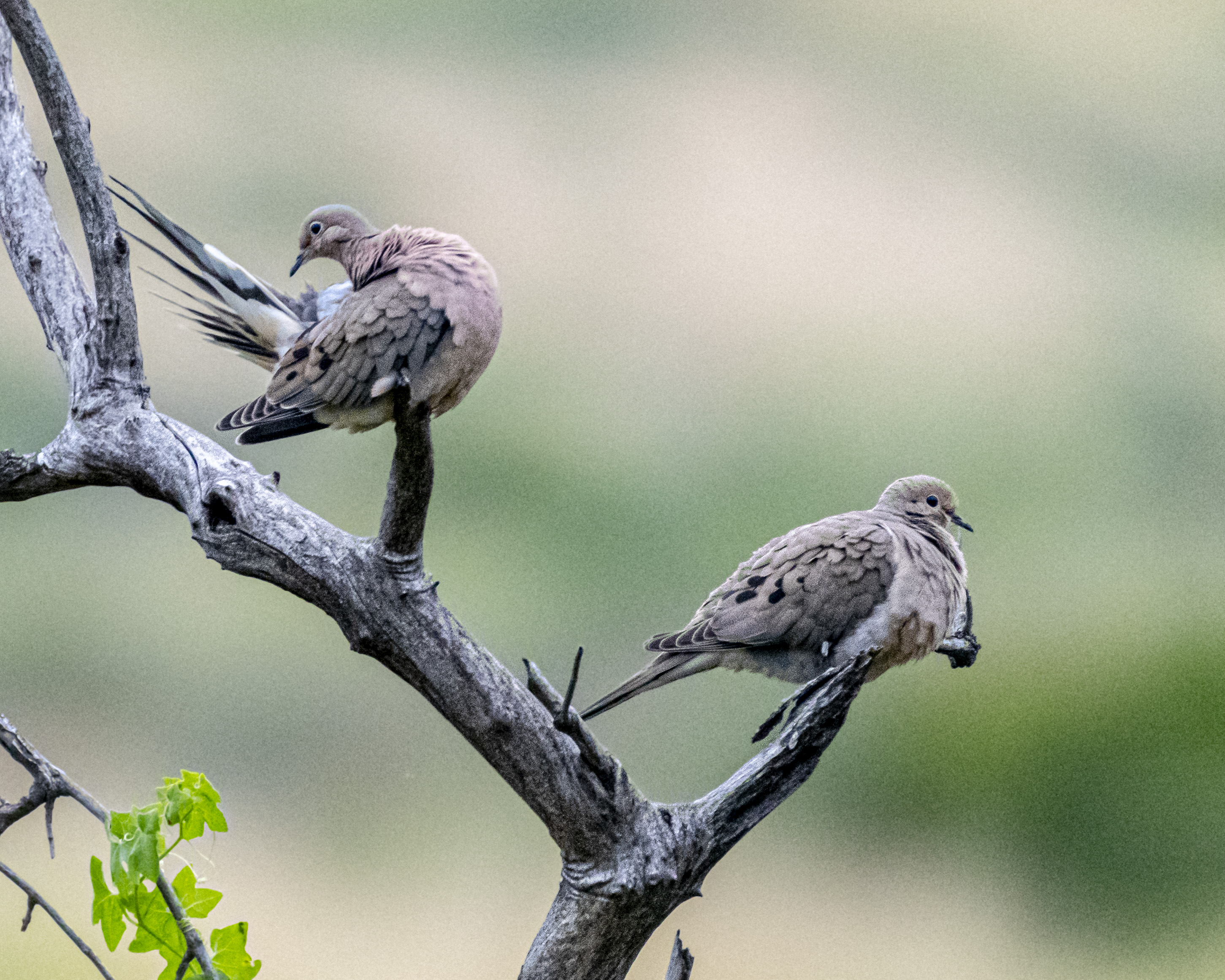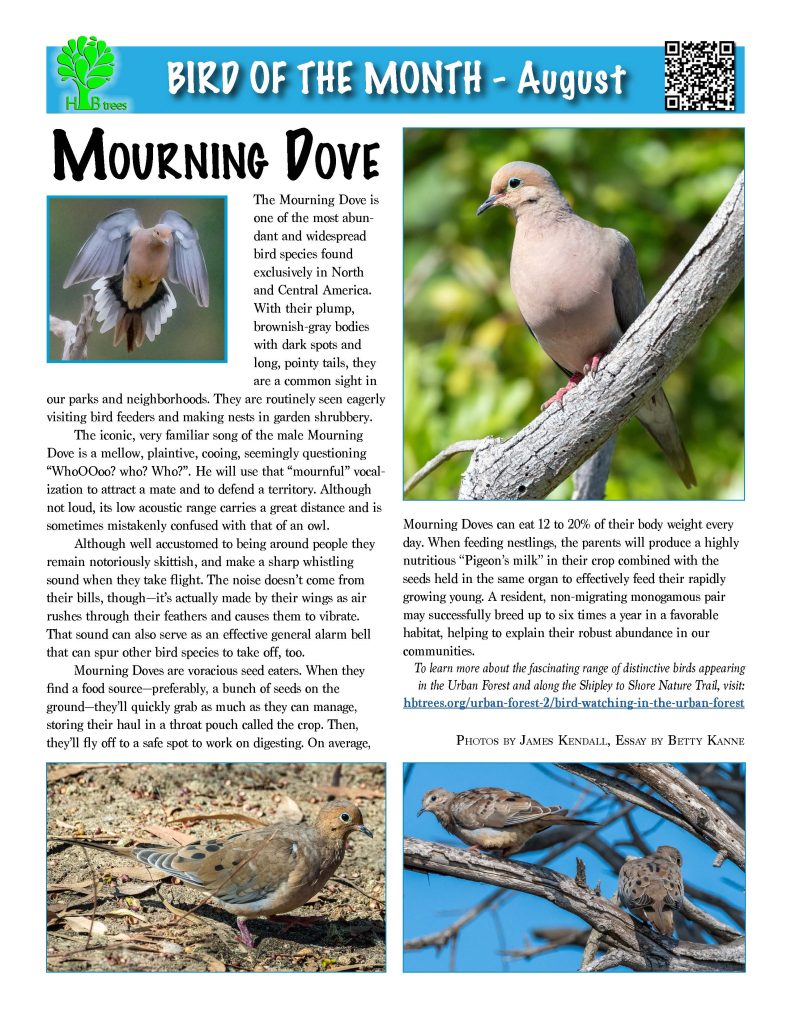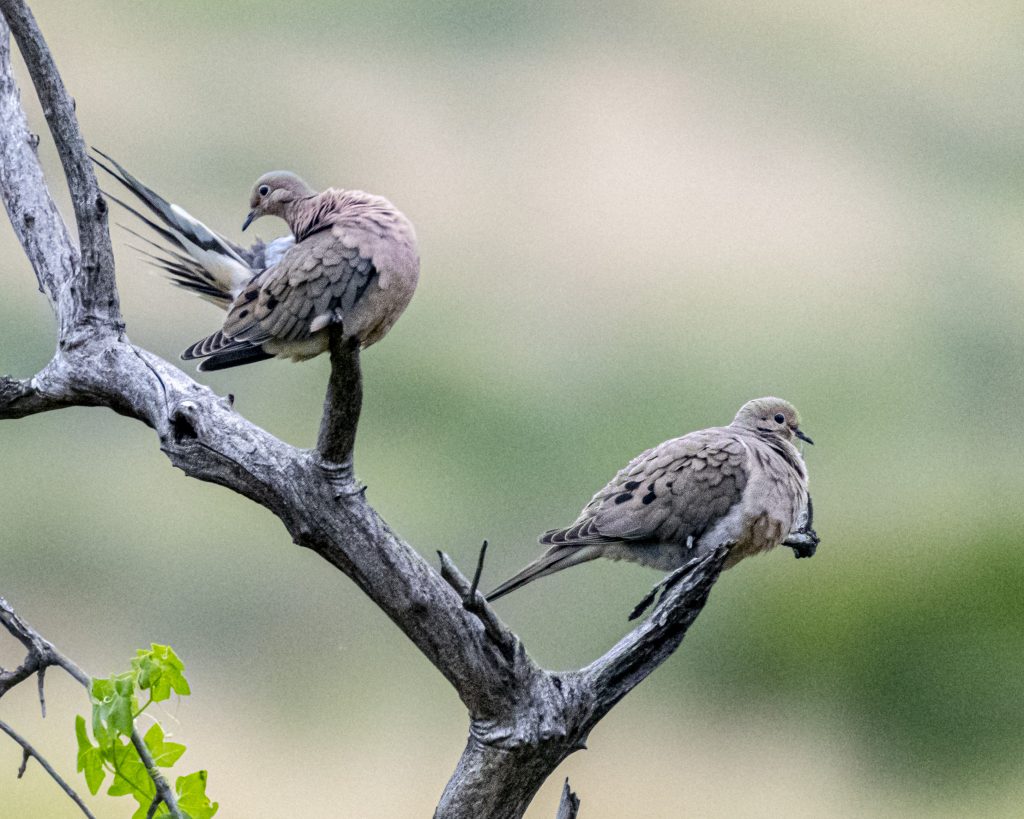
Mourning Dove
The Mourning Dove is one of the most abundant and widespread bird species found exclusively in North and Central America. With their plump, brownish-gray bodies with dark spots and long, pointy tails, they are a common sight in our parks and neighborhoods. They are routinely seen eagerly visiting bird feeders and making nests in garden shrubbery.
The iconic, very familiar song of the male Mourning Dove is a mellow, plaintive, cooing, seemingly questioning “WhoOOoo? who? Who?”. He will use that “mournful” vocalization to attract a mate and to defend a territory. Although not loud, its low acoustic range carries a great distance and is sometimes mistakenly confused with that of an owl.
Although well accustomed to being around people they remain notoriously skittish, and make a sharp whistling sound when they take flight. The noise doesn’t come from their bills, though—it’s actually made by their wings as air rushes through their feathers and causes them to vibrate. That sound can also serve as an effective general alarm bell that can spur other bird species to take off, too.
Mourning Doves are voracious seed eaters. When they find a food source—preferably, a bunch of seeds on the ground—they’ll quickly grab as much as they can manage, storing their haul in a throat pouch called the crop. Then, they’ll fly off to a safe spot to work on digesting. On average, Mourning Doves can eat 12 to 20% of their body weight every day. When feeding nestlings, the parents will produce a highly nutritious “Pigeon’s milk” in their crop combined with the seeds held in the same organ to effectively feed their rapidly growing young. A resident, non-migrating monogamous pair may successfully breed up to six times a year in a favorable habitat, helping to explain their robust abundance in our communities.
Bird of the month flyer

Bird gallery



